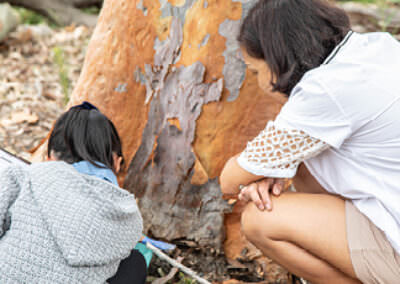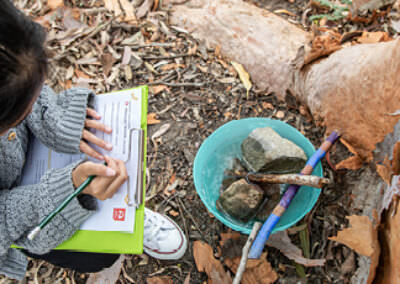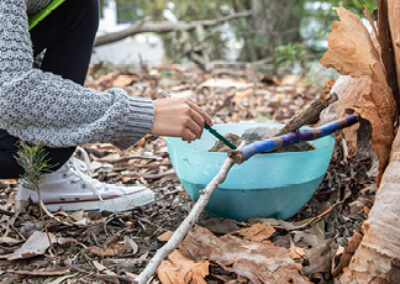
Water for wildlife
Time Allocation: 40 minutes*
Activity Level: Easy
Introduction
With Australia’s changing climate we need to adapt to our altering conditions. This is challenging but also possible for humans through behaviour change and infrastructure change, for example how we design our homes, farms and cities. It is not quite so easy for our precious wildlife. In this activity we can help support the needs of wildlife by giving them access to water year round.
*Time allocation will be dependent on site selection and travel time.
Checklist
Instructions
 STEP 1
STEP 1
How do humans use water in our daily lives?
From morning to night we use water for drinking washing and cooking and contributes to our health. Water is an essential resource in our local environment, industry and agriculture. Discuss these concepts with the children. What other questions arise from this discussion.
Where does our drinking water come from?
The potable water we use comes from various sources depending on where you live in Australia. Water is obtained from rainwater and harvested in tanks and reservoirs, it comes from nearby streams, springs, rivers and lakes, from groundwater or desalination plants and is then treated.
Use the videos to help stimulate discussion and the journal activity sheet to draw or record highlights.
 STEP 2
STEP 2
How can we responsibly share water with other living things?
Water is a basic need and right for humans and animals alike. Animals, like humans need water for their minds and bodies to function properly. They can become stressed and confused when dehydrated. Most animals do not store large quantities of water in their bodies in the same way humans do, so most need to drink regularly. Much of their water is found in the food they eat.
We have the ability to help other living beings when they are in need of water and are unable to source it themselves.
Due to lack of regular rainfall, low rainfall, drought or bushfires, water can become scarce for animals. Providing water is a simple yet effective way to help local fauna (animals).
Continue to use the journal to draw or record discussion highlights.
 STEP 3
STEP 3
Find a shady location, bordered by high grasses, plants or shrubs in your outdoor space. Place the water container here; this will help hide wildlife hide from possible predators when drinking or bathing. Make sure it’s also in a location where you can easily access the container for cleaning and refilling and also observe any wildlife activity around the water.
When setting up your container add a rock or two to the base before covering with clean water. If the container is large you might also like to add a medium size branch to the container so that small animals such as skinks can climb in and out safely.
 STEP 4
STEP 4
Top up water when the level appears low or the water becomes dirty. Intermittently observe the water container on warm or hot days. Predict and record which animals might visit your water container and at what time of day in your journal. Which is the smallest animal who could access the water? Which is the largest? Think about where you live, and what animals you have observed in the past.
If you feel the location is not optimal after observing and trialing the location of your water container move it to another location which might be more suitable for wildlife.
Extension Activity
Investigate Indigenous Australians use of scientific knowledge to manage water resources in dry conditions.
Find out how Australian desert animals survive dry conditions with little available water.
Explore the water cycle.
How are some plants adapted to cope with low rainfall?